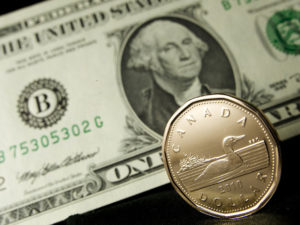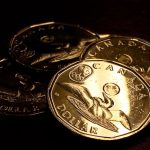 The loonie, as the Canadian dollar is best known, hovered close to the strongest level in three weeks against its US counterpart after data showed today that the Canadian economy expanded at a faster-than-expected pace in January, led by gains in manufacturing output.
The loonie, as the Canadian dollar is best known, hovered close to the strongest level in three weeks against its US counterpart after data showed today that the Canadian economy expanded at a faster-than-expected pace in January, led by gains in manufacturing output.
USD/CAD touched a session low at 1.1003 at 13:30 GMT, after which consolidation followed at 1.1018, losing 0.38% for the day. Support was likely to be found at March 28th low, 1.1001, also the pairs weakest since March 7, while resistance was to be encountered at March 28th high, 1.1078.
The Canadian GDP grew 0.5% to an annualized 1.61 trillion Canadian dollars (approximately $1.46 trillion), offsetting a 0.5% drop in the previous month and beating analysts estimates for a 0.4% gain.
The data suggested that the worlds 11th largest economy may be gaining momentum after the harsh winter that Bank of Canada Governor Stephen Poloz said is harming output.
Manufacturing output surged by 2% in January, led by gains in goods meant to last at least three years, following a 1.9% decline in the previous month, todays report by Statistics Canada showed. Production of all goods-producing companies increased by 1 percent with expansion in mining, oil and gas extraction and construction.
“I feel optimistic for 2014 and into the future,” Gear Energy Ltd. Chief Executive Officer Ingram Gillmore said in a March 3 Bloomberg interview. “The strength of the realized oil and gas prices right now are incentivizing companies in western Canada in particular to increase their capital investments.”
Wholesale sales rose by 0.7 percent in January, while retail sales surged by 1.3 percent, with both industries partially offsetting drops seen in December.
According to data compiled by Bloomberg, the winter in Toronto, Canada’s biggest city, was the coldest since 1976-77.
The BoC Governor Stephen Poloz commented on March 18th that first-quarter growth may be “softer” than the central bank forecast in January because of inclement weather and other factors he didn’t elaborate on.
Meanwhile, greenbacks demand was pressured after the monthly business activity survey for the area of Chicago showed that the corresponding PMI slowed down to a reading of 55.9 this month from 59.8 in February, while analysts predicted a smaller decline to 58.5.
On Friday, Thomson Reuters in cooperation with the University of Michigan reported the final reading of their index, a gauge of US consumer confidence, which came in at 80.0, below analysts’ expectations of an increase to 80.5, but slightly up from a preliminary reading of 79.9.
However, data also showed that consumer spending in the US rose in February by the most in three months as incomes increased, adding to evidence the economy is gaining momentum after the unusually harsh winter.
Consumer spending, which accounts for almost 70% of the American economy, rose 0.3% last month, in line with analysts’ estimates and after a 0.2% increase in the previous month that was smaller than previously reported. Incomes also advanced 0.3% in February, in line with analysts’ expectations and matching January’s gain, data by the US Commerce Department showed on Friday.





